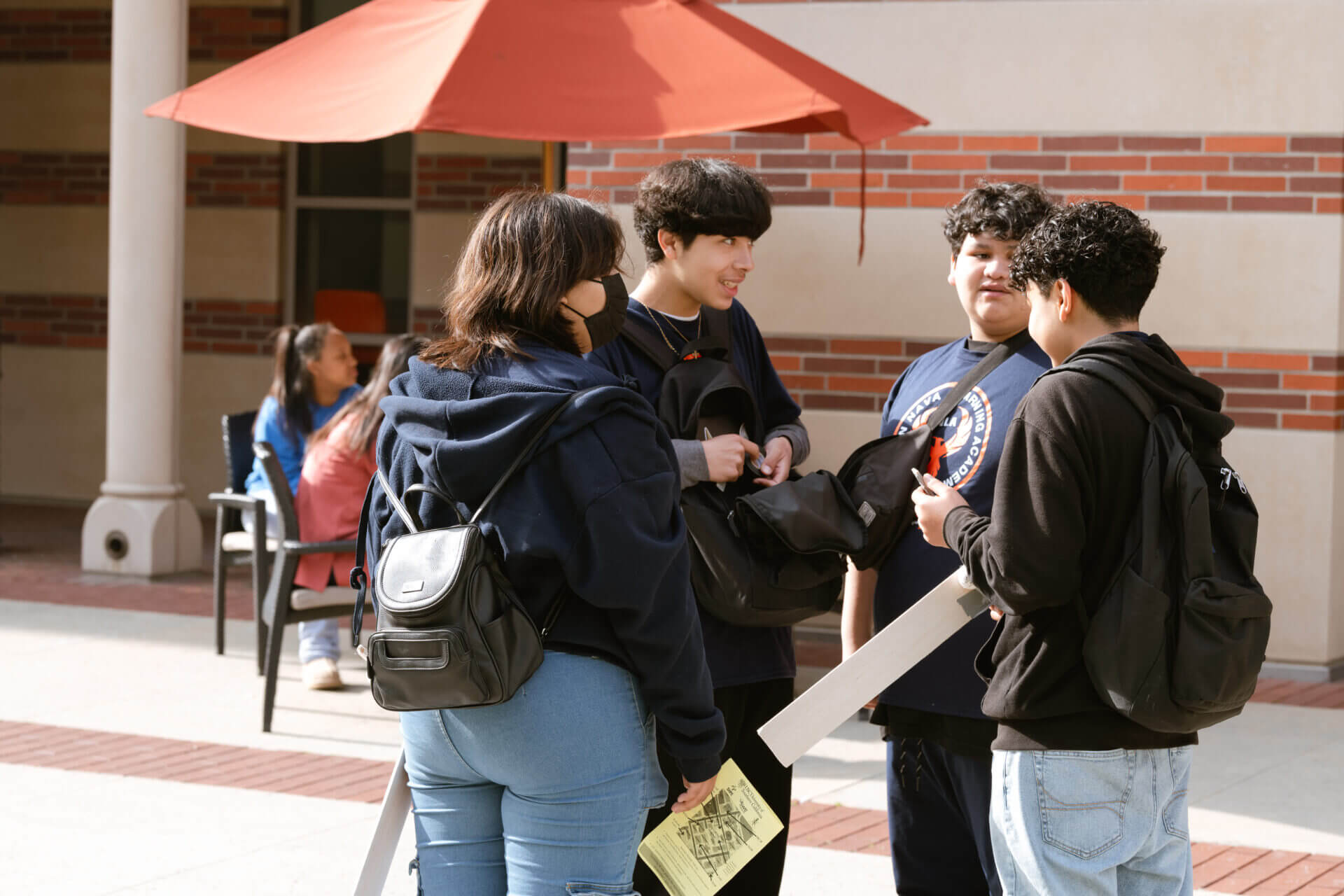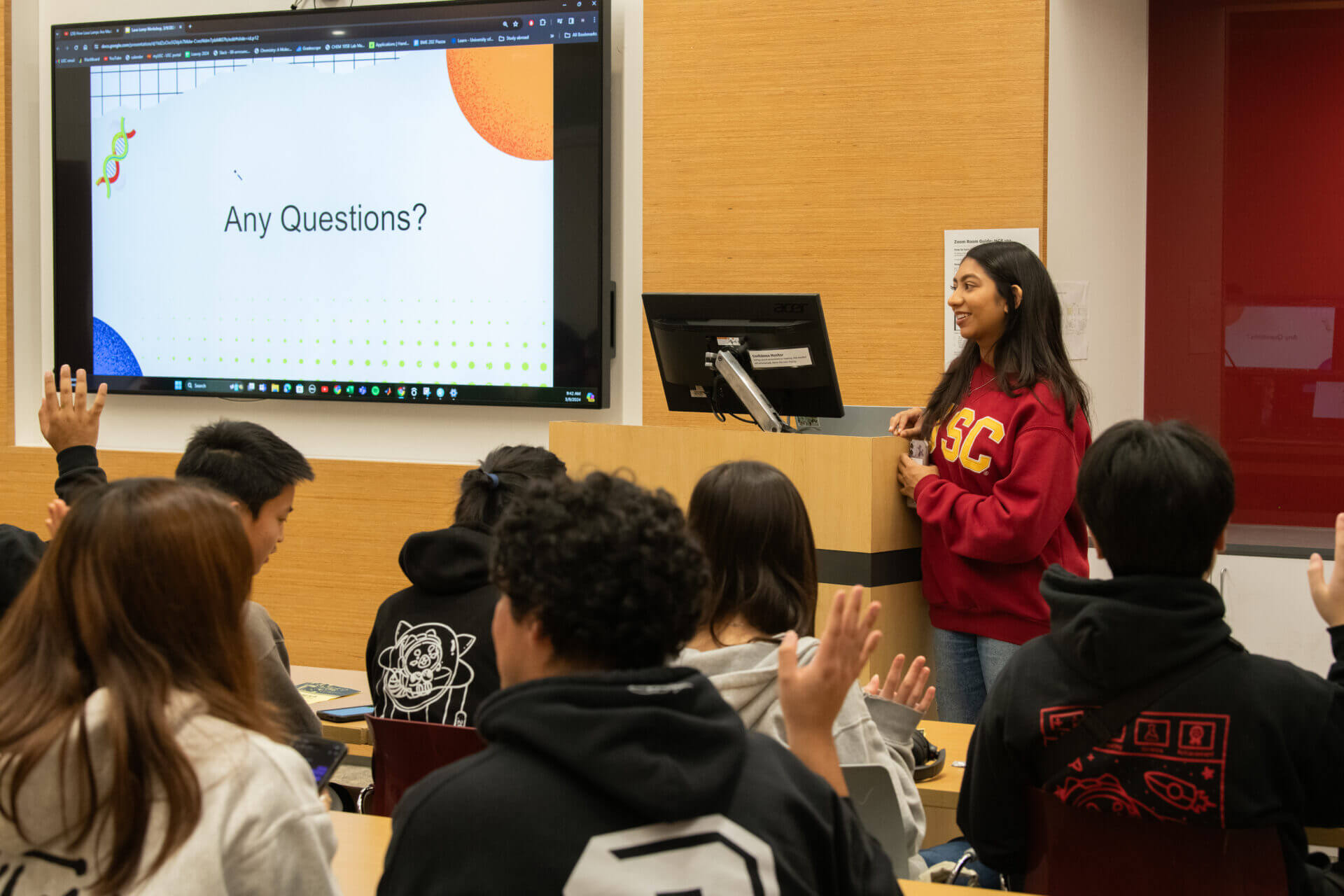MESA Student
To enroll in the USC MESA program, students will need to complete the two-step enrollment process and must attend one of our partner schools. Please visit our USC MESA Student Weebly ENROLLMENT page for the details.
- Students enroll/register or update profile on the online MESA Statewide Database.
- Students submit the MESA student and parent consents and authorization.
Please visit our USC MESA Student Weebly website (made by students, for students and parents) for events, current announcements, MESA STEM Challenges, and other opportunities.
MIDDLE SCHOOL

Planning for High School
As you begin to plan for high school, try to keep as many options open as possible for yourself.
As high school graduation approaches, you may discover that the vocational school route is right for you. In this case, your post-secondary education can be done at a community college with the goal of obtaining a certificate or an associate degree. You can enter several STEM careers with an associate’s degree or certificate: web developers, computer specialists, environmental technicians, and agricultural and food science technicians to name a few.
You may find that receiving a bachelor’s degree is the right path for you and can be received from a CSU, UC, or independent college/university. In order to pursue a degree in any of the three systems (CSU, UC, or independent), you are required to complete a specific set of courses, known as the “a-g” courses, by your final year of high school and maintain a competitive GPA to be eligible for admission. Not completing these courses will limit your options for after high school.
If your school currently offers it, challenge yourself now by taking “a-g” courses and get ahead, such as foreign language or Algebra while you are in middle school. This will allow you to take more advanced courses in high school and familiarize yourself more with the “a-g” coursework.
Choosing a Career
Choosing the career that you want to pursue is one of the biggest decisions that you will have to make, but this doesn’t have to be stressful or difficult. In order to make the best decision for yourself, you should get to know yourself, do research on your various options, and make an informed decision about what is right for you. You can start by making a list of careers that interest you, without neglecting the ones that you are not familiar with.
You can then begin to research these careers to find what level of education is required, what skills are necessary, and what other requirements are necessary to enter that career. To help in your career search, you can utilize an interest profiler this one. This interest profiler will help you identify careers based on the interests that you select. It is also important to have an open discussion with the important adults in your life such as family members, counselors, teachers, or mentors regarding your career options.
HIGH SCHOOL

A-G Requirements
Incoming freshmen at the University of California (UC) and California State University (CSU) systems must complete specific high school "a-g" courses, essential for preparing for college and beneficial for private or out-of-state universities.
Subject Requirements:
- History/Social Science (“a”):2 years, including one year of world history and one year of U.S. history (or equivalent).
- English (“b”):4 years of college preparatory English, integrating reading, writing, listening, and speaking.
- Mathematics (“c”):3 years (5 years recommended, up to AP Calculus), covering algebra and geometry.
- Laboratory Science (“d”): 2 years (3 years recommended) of laboratory science, including biology, chemistry, and physics.
- Language other than English (“e”): 2 years (3 years recommended) of the same language or equivalent to the second level of high school instruction.
- Visual and Performing Arts (“f”): 1 year from dance, music, theater, or visual arts.
- College-Preparatory Elective (“g”): 1 year from "a-f" courses or approved electives.
Ask your counselor about Career and Technical Education (CTE) courses that may satisfy these requirements, and remember that some classes completed in 7th or 8th grade may also count towards the math and language requirements.
Systems of Higher Education
There are four main systems of higher education institutions that cater to diverse educational and career paths:
- 2-Year Institutions: Community colleges that offer associate degrees and certificates, providing a more affordable option for students.
- Public 4-Year Institutions: State universities offering bachelor’s degrees, often with a wide range of programs and larger campus environments.
- Private 4-Year Institutions: Independent colleges and universities that may offer specialized programs and smaller class sizes, often with higher tuition.
- Vocational/Technical Schools: Focused institutions that prepare students for specific careers with hands-on training and education.
When considering which institution to attend, reflect on your personal goals, academic interests, and the type of campus environment you prefer. Think about your desired class sizes, whether you want to be close to home, and if studying abroad is important to you. Answering these questions can guide you in making an informed decision about your educational path.
Financial Aid
Financial aid is essential for many students, helping to cover the costs of college. There are different types of aid available based on financial need or merit, including:
- Grants: Financial aid that does not need to be repaid; typically awarded based on financial need.
- Work-Study: Programs that allow students to work part-time while attending school to help pay for expenses.
- Scholarships: Awards based on academic merit, talent, or specific criteria, which do not require repayment.
- Loans: Borrowed funds that must be repaid, usually with interest, after graduation or leaving school.
Financial aid can come from various sources, including federal, state, campus-based/institutional funds, and private organizations. To receive financial aid, complete all required documents (like the FAFSA) and adhere to all deadlines to maximize your funding options.
For more information on scholarships and financial aid opportunities, visit Fastweb.
Tips for College
Transitioning to college can be both exciting and challenging. Here are some essential tips to help you succeed and make the most of your experience:
- Stay Organized: Use planners, calendars, or apps to keep track of assignments, exams, and important dates. Organization will help you manage your time effectively.
- Get Involved: Join clubs, organizations, or sports to meet new people and enhance your college experience. Networking is vital for personal and professional growth.
- Seek Help: Don’t hesitate to ask professors or peers for assistance if you’re struggling with coursework. Utilize campus resources such as tutoring centers and counseling services.
- Balance Work and Play: Ensure to maintain a healthy balance between academics and social life. Take breaks, but prioritize your responsibilities.
By following these tips and being proactive, you can navigate the transition to college life more easily and make the most of your educational journey.

